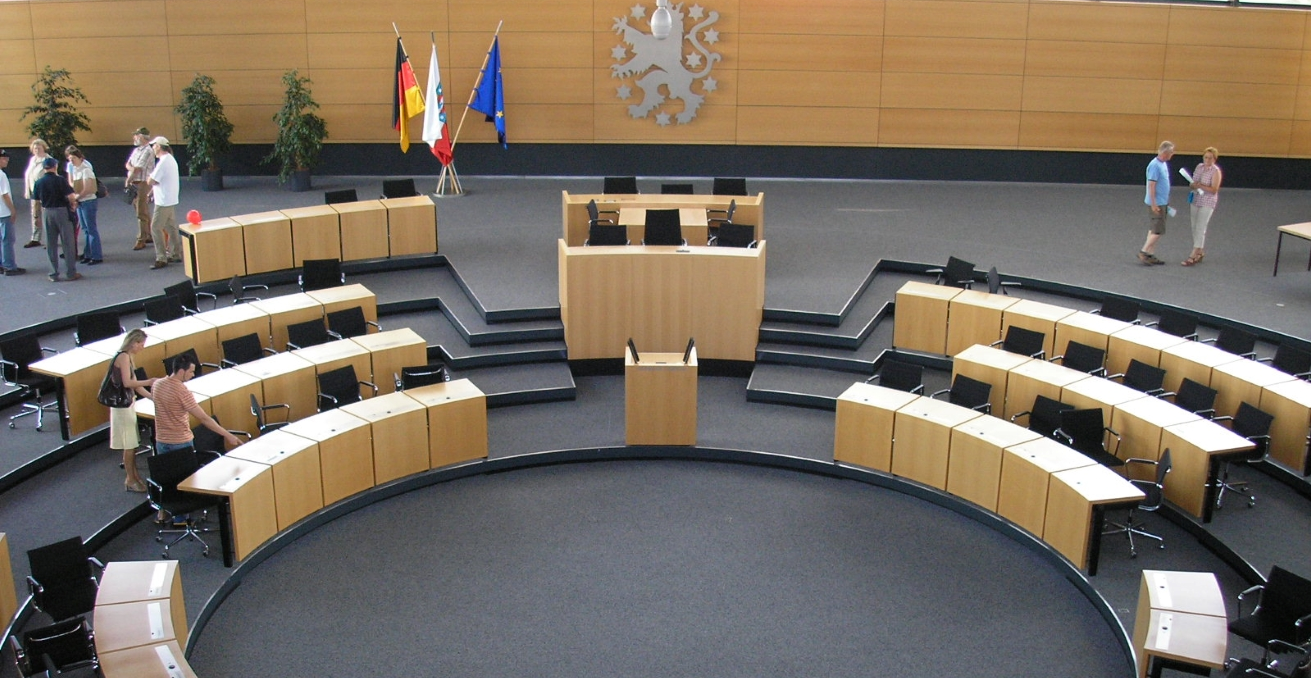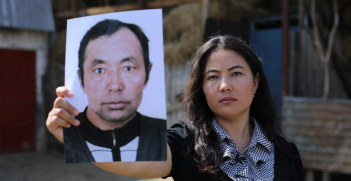Behind the “Unforgivable” Political Row in Eastern Germany: An Uncanny Relationship with the Far-Right

There is no straightforward narrative behind recent series of events in East Germany’s state of Thuringia, which have thrown German politics into disarray.
On 5 February, Thomas Kemmerich, the largely unknown leader of the pro-business Free Democrats, a party that won only five percent of the votes in state elections in October, became Thuringia’s State Premier. His election was made possible by the support of the far-right Alternative for Germany (AfD) and Chancellor Angela Merkel’s centre-right Christian Democratic Union (CDU). The long-standing CDU’s policy of Brandmauer – “firewall” – that is meant to keep the far-right from power was, at this stage, broken.
Chancellor Merkel was quick to call it “unforgivable” and a “bad day for democracy.” The reminiscence of Germany’s darkest past swiftly appeared, as parallels were drawn with Hitler’s first local success in Thuringia in 1930, similarly supported by the conservatives. This newly formed alliance between the centre and the far-right was short-lived, but it left Germany in a political quagmire. After widespread protests, within only a day, Kemmerich resigned, followed by CDU’s leader Annegret Kamp-Karrenbauer on 10 February. With an unclear future direction, the 30-year-long political domination of the Christian Democrats in German politics could be at risk.
These events are less surprising if placed in the context of the local elections that took place across Eastern Germany in 2019. The AfD has emerged as the second strongest party in Saxony, Brandenburg, and Thuringia, winning over 20 percent of the votes in each electorate. Its support comes at the expense of the traditional parties of the left and right. The latest victory in Thuringia doubled AfD’s support (from 10.6 percent in 2014 to 23.5 percent) and has been perceived as a major win for Björn Höcke, a controversial far-right rising star, who leads the AfD’s hard-line faction. At the national level, AfD has entered the Bundestag as the third strongest party following the 2017 elections. While AfD has been gathering more votes across Germany, its success has been more prominent in Eastern Germany.
Does Eastern Germany’s specific political and social environment explain the growing support for the German far-right? Being part of the Soviet Bloc until the 1990s, the unification that took place in 1990 has brought much-wanted political freedoms, but with painful side effects: the economic collapse of state-owned industries, high unemployment, brain drain, and depopulation, especially in rural areas. While the economic gap has narrowed in recent years, almost 60 percent of Eastern Germans still feel like second-class citizens, thirty years after the fall of the Berlin Wall.
As in other parts of Europe, much of the support for the far-right comes from popular disillusionment with mainstream politics. The far-right parties have a great ability to reach out to those who feel left out by the political establishment – those who are on the poor(er) spectrum of the society and feel that the mainstream parties do not hear their opinions and represent them in the public forum. In Eastern Germany, the working class still favours left-wing parties. The Linke in Thuringia, which comprises former East German communists and more urban left socialists, still captures 31 percent of the votes. Nevertheless, liberal migrantion policies have been diverting a portion of voters, particularly the older ones, towards the anti-immigration far-right. Their concerns indicate deeper structural inequalities that concern wages and pensions. More deeply, they also reflect the divergent cultural preferences between Germany’s eastern regions and the more multicultural parts of the country.
In a broader European context, right-wing national populism is old news. Parties on the right side of the political spectrum have been gaining ground in Hungary, Austria, Switzerland, Belgium, Finland, Italy, and France. Germany has, however, been the most significant concern given its leadership role in the EU. Nevertheless, the average support for far-right parties across Europe in 2019 has been unchanged at 14 percent. As evidenced in several European countries, most recently in Austria, support for far-right parties decreases when those parties face the responsibilities of governance. The far-right parties achieve their best election results starting in the opposition when their unrealistic promises attract voters disengaged with mainstream politics.
The political stability of Europe will depend very much on the skilfulness of the central parties in accommodating electoral demands that are driving voters towards the edges of the political spectrum. In Germany, that will require the CDU to engage in a soul-searching mission to decide if and how it will accommodate its more conservative voters demands, following their dissatisfaction with Chancellor Merkel’s strong centrist stance and too-liberal migration policies.The resignation of Kramp-Karrenbauer, who was seen as Merkel’s designated successor, reflects the divisions within the CDU about the party’s future directions, including its cooperation with the parties at the edges of the political spectrum. This task is far from easy. While cooperation with the far-left parties, such as the Linke in Thuringia, could further enrage the conservative voters, its cooperation with the far right calls into question party values and its stance on liberal democracy. The situation in Germany reflects similar divisions in traditional conservative parties across Europe.
Meanwhile, in Thuringia, selecting the CDU’s Christine Liberknecht as the government caretaker could be a solution to the impasse until the new elections. The proposal comes from the leftist former Premier Bodo Ramelow, whose inability to form a new government with a coalition of left-leaning parties led to the crisis. The support for Ramelow’s party, the Linke, surged to 39 percent following the recent events, but the support for AfD also slightly increased. On the other hand, the CDU continues to lose ground in Thuringia, with support dropping to only 13 percent.
As political fragmentation in Germany and throughout Europe continues, the centre is still holding on. The question is: for how long? In Eastern Germany, the social effects of multiculturalism and resentment toward the political establishment have been key factors driving voters away from mainsteam parties. The turmoil in Thuringia illustrates the gap between Eastern and Western Germany, which persists three decades after the fall of the Berlin Wall.
Ivana Damjanovic is a PhD student at the Australian National University. Her research is interdisciplinary, encompassing issues of law and politics in the area of investor-State dispute settlement within the context of the European Union. Prior to commencing her PhD studies, Ivana served as a diplomat for the Government of Croatia on postings in Europe and Australia.
This article is published under a Creative Commons Licence and may be republished with attribution.





